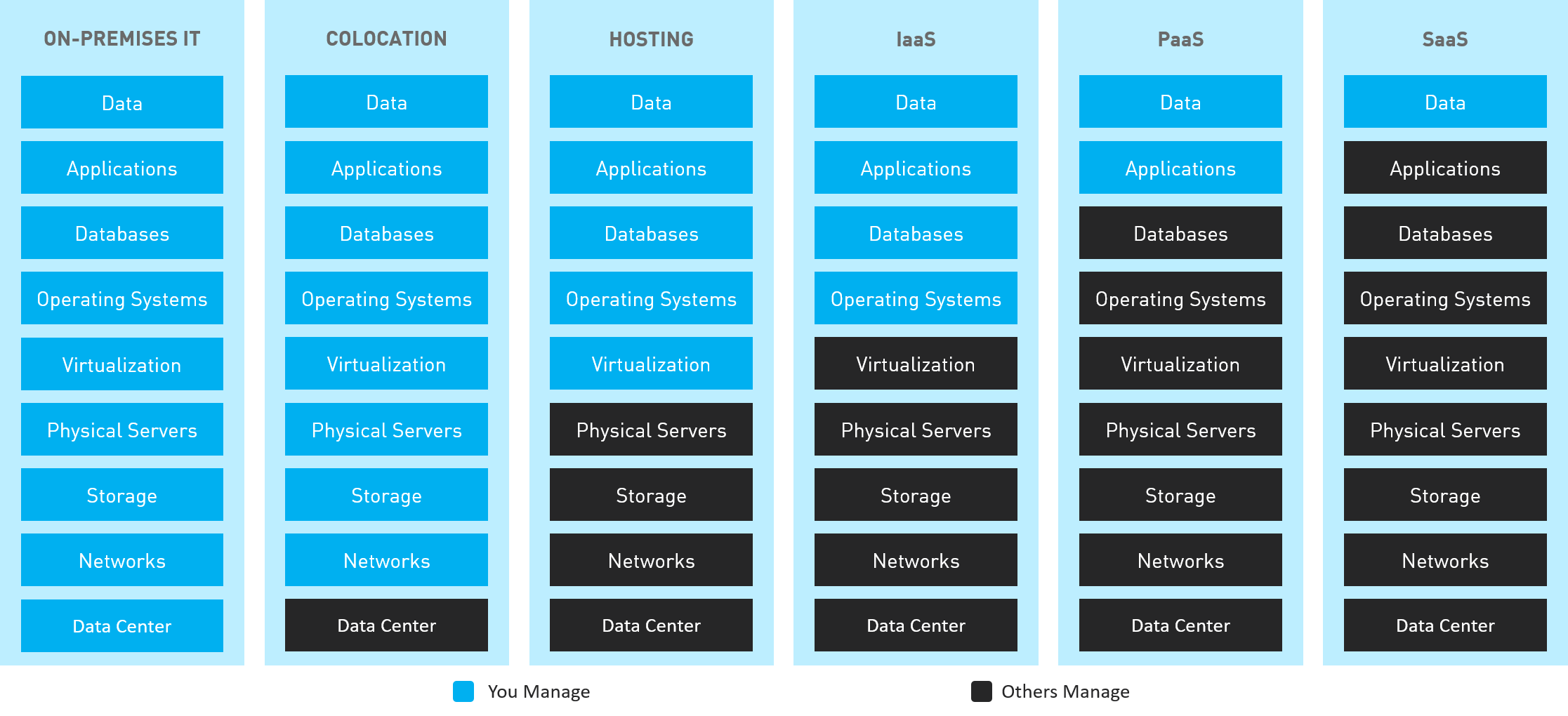
On-Premises Data Center
Historically, all organizations used on-premises data centers. An on-prem data center simply means that the organization maintains all of the IT infrastructure needed by the business on-site.
An on-prem data center includes everything from the servers that support web and email to the networking hardware connecting them to support infrastructure equipment like uninterruptible power supplies (UPS). Depending on the organization, this can range from a server closet to a massive, dedicated private data center like those operated by large tech corporations.
Cloud Data Center
Over time, organizations have increasingly moved away from the on-premises data center. Instead, they have adopted cloud data centers.
A cloud data center moves a traditional on-prem data center off-site. Instead of personally managing their own infrastructure, an organization leases infrastructure managed by a third-party partner and accesses data center resources over the Internet. Under this model, the cloud service provider is responsible for maintenance, updates, and meeting service level agreements (SLAs) for the parts of the infrastructure stack under their direct control.
Shared Responsibility Model
The migration from an on-premises data center to a cloud data center doesn’t mean moving everything to the cloud. Many companies have hybrid cloud data centers which have a mix of on-premises data center components and virtual data centers components. In the figure below we see how as-a-service models are shifting ownership of data center and infrastructure components from a fully owned and operated on-premises facility towards a commodity service model.

With these new models come a sharing of responsibilities between the cloud customer and service provider. Depending on the model selected, an organization may be responsible for maintaining and securing more or less of their infrastructure stack. The breakdown of responsibilities is outlined by the cloud services provider in shared responsibilities models.
On-Premises Data Centers vs Cloud Data Centers
Nearly all organizations now have at least some of their infrastructure hosted in the cloud. The reason for this is that cloud data centers offer a number of advantages over maintaining an on-prem data center. Some of the pros and cons of cloud-based vs. on-premises data centers include:
- Scalability: In an on-premises data center, resource scalability is limited by the infrastructure that the company has purchased and deployed. In the cloud, additional resources can be quickly and easily spun up as needed.
- Flexibility: In an on-premises data center, resource flexibility is limited by the need to acquire, provision, or update appliances. In the cloud, a customer can spin up or take down resources quickly to meet business needs.
- Cost: Maintaining an on-prem data center is more expensive than a cloud-based one. On-prem, an organization pays full price for all of their infrastructure. In the cloud, resources can be shared, and cloud service providers can take advantage of economies of scale.
- Availability: In an on-premises data center, an organization has complete control over their infrastructure, which can be good or bad. In the cloud, availability is protected by service level agreements, which may provide better guarantees than an organization can in-house.
- Security: In the cloud, the cloud service provider is responsible for securing part of an organization’s infrastructure stack and is likely more practiced at doing so. However, some customers may want additional security of their cloud-based data centers that are not natively provided by the cloud service provider.
- Accessibility: In an on-prem data center, the organization has complete control over the systems that it deploys and uses. In the cloud, the organization is limited to what is offered by the service provider.

